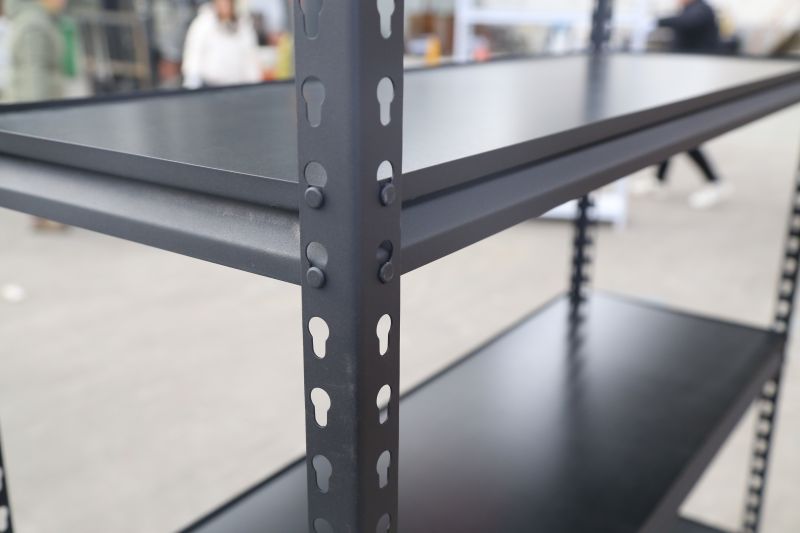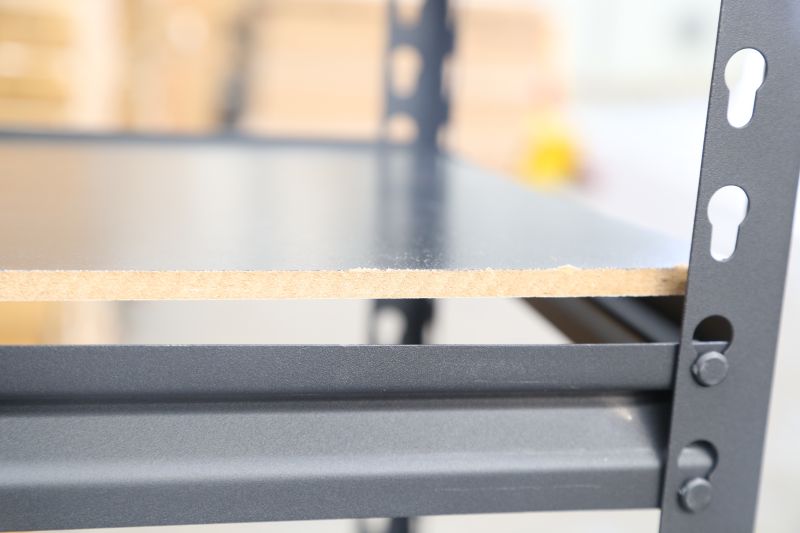Bolt-less rivet shelves are a modern shelf system that adopts a bolt-less and nut-less design and uses rivets to fix components, making the shelf structure more solid and stable. The following will introduce bolt-less rivet shelves from four aspects: detailed information, industry trends, installation steps and production processes.
Detailed information: Product features: Bolt-less rivet shelves are made of high-strength aluminum alloy or steel and have good corrosion resistance and pressure resistance. Shelves are simple and convenient to assemble. No bolts and nuts are required, only rivets are needed to connect the components. It has a compact structure and takes up little space. It can effectively utilize storage space and improve storage efficiency. Scope of application: Bolt-less rivet shelves can be widely used in warehouses, logistics sorting centers, supermarkets, factories and other places to meet the warehousing needs of enterprises in different industries and sizes. The height and length can be adjusted according to actual needs, free combination, strong flexibility and adaptability. Advantages: The structure of bolt-less rivet shelves is firm and stable, able to withstand large weights and ensure safe storage of goods. It is quick and easy to build without using a lot of tools and manpower, saving time and costs. Goods can be placed and taken out as needed, which is easy to operate and improves logistics efficiency. At the same time, the shelves can be disassembled and reorganized to facilitate adjustment and relocation to meet the needs of enterprise development.
Industry trends: As a modern shelf system, bolt-less rivet shelves have been widely used and promoted in the warehousing industry. With the rapid development of e-commerce, more and more companies need to build efficient warehousing systems to meet the growing logistics needs. Bolt-less rivet racking has quickly become the preferred solution for warehouse management due to its flexibility, high load-bearing capacity and rapid construction. In recent years, the domestic and foreign markets for bolt-less rivet shelves have shown a steady growth trend and are expected to maintain a high growth rate in the future.
Installation steps: Determine the layout and location of shelves and plan according to specific needs. Install the main columns and beams of the shelf to the predetermined position, and use a rubber hammer to tap them to make them firm and stable. Assemble the side columns and beams according to the preset positions and secure the connections with rivets. Install brackets on the bottom and middle levels of the shelves so that they are tightly connected to the main columns. Check the stability and level of the shelves and make adjustments as necessary. After the installation is completed, check whether the various components of the shelf are installed correctly and ensure that the shelf structure is stable.
Production process: Material preparation: Choose high-strength aluminum alloy or steel as the material of the shelf. Making components: Cutting materials into required shapes and sizes according to design requirements. Processing: Grind, sand and anti-corrosion treatment the components to improve their surface smoothness and corrosion resistance. Assemble the shelves: Assemble the components according to the design drawings and specifications, and use rivets for fixed connections. Quality inspection: Conduct quality inspection on finished shelves to ensure they meet design requirements and safety standards. Packaging and delivery: Pack the finished shelves and deliver them according to customer needs.
To summarize, boltless rivet racking is a modern racking system that offers many advantages. It is widely used and can improve warehousing efficiency and logistics efficiency. In the future, bolt-less rivet shelves are expected to become a mainstream product in the warehousing industry, providing enterprises with more convenient and efficient warehousing solutions.
Post time: Sep-13-2023


